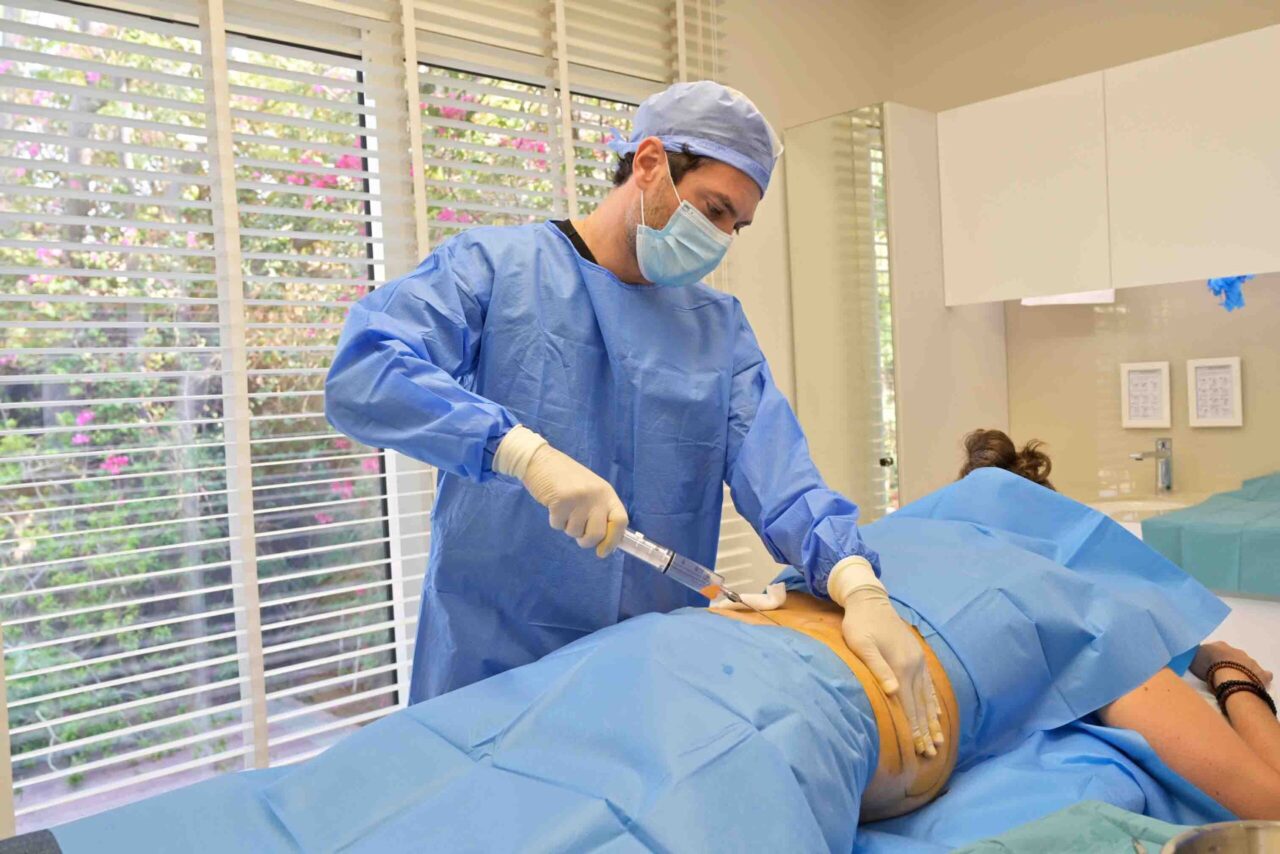How Long Does Fat Transfer to Breasts Last?

Over the past decade, fat transfer to breasts has gained popularity as a less invasive, implant-free alternative that avoids foreign materials. Instead, it uses your own fat from areas like your thighs or abdomen, which is reinjected into the breasts for a subtle, natural-looking fullness. Some of the most common concerns of patients are “How long does fat transfer to breasts last?” or “Will results be permanent?” At Lucia Clinic in Dubai, we know that answers to these questions depend on different factors. Let’s explore how the procedure works, what affects the longevity of results, and how to maintain the best possible outcome.
How Does Fat Transfer to Breasts Work?
Fat transfer to breasts, also called autologous fat grafting, is a procedure that uses the patient’s own fat to enhance their breast volume. The procedure involves three steps:
- Fat Harvesting: The process starts with liposuction from areas with excess fat, which are typically the abdomen, thighs, or hips. This is done with a thin cannula, which gently extracts the fat with minimal trauma to the tissue around it.
- Purification and Processing: Then, the fat is cleaned to eliminate things like blood, oil, and excess fluids. Only the healthy, usable fat is kept for the transfer.
- Fat Injection: Finally, the surgeon uses small syringes to inject the fat into the breasts. The fat is distributed in layers to ensure it shapes naturally and integrates with existing tissue.
Compared to traditional implants, fat transfer to the breast has several benefits:
- It doesn’t include foreign materials, thus reducing the risk of complications like rupture.
- It solves two issues at once: body contouring in fat donor areas and breast augmentation.
- The results feel and look more natural, since they’re made from the patient’s own tissue.
- It’s low maintenance, as it doesn’t require future replacements.
Expected Longevity of Fat Transfer Results
Fat transfer to breasts is considered semi-permanent. On average, 50-70% transferred fat cells develop a new blood supply and stay in place. As for the rest, the body naturally reabsorbs it within the first few months.
You can expect to see visible and stable final results approximately 3-6 months after the procedure. How much fat stays long-term depends on several factors:
- Surgical Technique and Surgeon Expertise: The way the fat is placed matters. A skilled surgeon who adds small amounts in the right spots can help more of it survive long-term.
- Fat Processing Methods: With gentle handling and proper purification, the fat transfer is more likely to last.
- Patient’s Metabolism and Lifestyle: Weight changes, smoking, poor diet, and aging can affect how long the results last. Keeping your weight steady helps a lot.
Factors That Can Impact How Long Results Last
When it comes to patient lifestyle and habits, several factors influence how much fat survives, as well as how long it remains stable.
First, fat transfer to the breasts depends on weight stability. The transferred fat cells act like any other fat in your body, meaning they can expand or shrink with weight changes. So, if your weight goes up or down, your breast size may change as well.
Both smoking and alcohol use can affect the procedure results. They constrict blood vessels, leading to reduced oxygen, which fat cells need to survive. A balanced diet and regular exercise support long-term results by helping you maintain a steady body weight. That said, intense fat-burning workouts too soon after the procedure could cause the opposite effect. Hormonal changes, such as pregnancy or menopause, can also affect fat distribution and change breast volume over time.
Finally, the surgeon’s skill plays a big role. A qualified, experienced surgeon using the proper techniques will significantly improve the chances of the fat settling properly and lasting for years.
Tips to Maximize the Longevity of Breast Fat Transfer
Following proper aftercare is especially important after fat transfer breast augmentation in Dubai to maximize fat survival and enjoy long-lasting results. Here are a few things you should keep in mind:
- Maintain a stable weight: Fluctuations in weight can cause the transferred fat to shrink or grow. So by keeping your weight steady, you can prevent changes in breast size.
- Live a healthy lifestyle: Eat a balanced diet, stay active, and keep stress in check.
- Follow aftercare instructions: Wear compression garments, and avoid putting pressure on your chest while healing.
- Don’t smoke: Nicotine restricts blood flow and lowers oxygen levels, thus reducing the survival of newly transferred fat.
- Attend follow-ups: Regularly check in with your surgeon to track progress and spot early signs of fat loss or asymmetry.
While you should always stick to these tips, they’re especially important during the first few months, when the transferred fat cells are developing their new blood supply.
Fat Transfer vs. Breast Implants: Which Lasts Longer?
If you’re deciding between fat transfer and breast implants, there are a few factors to keep in mind when making a choice.
With fat transfer, you can expect subtle, natural-looking results. Since it uses your own fat, there’s no risk of rejection, and the outcome can last for many years, given that the transferred fat survives. The results vary from person to person, and the shape may gradually change over time due to aging, hormonal shifts, or weight changes.
For those seeking a more noticeable change, breast implant Dubai procedures offer precise control over shape and volume, and results are immediately visible. That said, they don’t give permanent results. Due to risks like rupture, capsular contracture, or shifting, most surgeons recommend replacements or revisions after 10-15 years.
Fat transfer is ideal for people who want a subtler enhancement, want to avoid synthetic materials in their body, and have enough fat to harvest from donor areas. It works best for those who are close to their target weight and are set on maintaining it.
On the other hand, implants are better suited for patients who want a more dramatic change, have little fat to harvest, or want more control over breast shape and symmetry that can’t be achieved just through fat transfer. If you’re unsure about the best choice for you, a consultation with a qualified surgeon at a trusted plastic surgery clinic in Dubai can help determine the best option based on anatomy, lifestyle, and expectations.
Realistic Expectations and Long-Term Maintenance
While fat transfer offers long-lasting, natural-looking results, it doesn’t stop your body from changing over time. As you age, your skin loses some elasticity and fat shifts around, which can change the shape or size of your breasts down the line.
In some cases, patients may choose to have touch-up procedures to restore fullness or improve symmetry, in case the transferred fat gets lost. This is typical when the initial fat retention was on the lower end of the usual 50–70% range.
Most importantly, you should have realistic expectations. Fat transfer is not meant to change size or shape dramatically, and maintaining results depends on a stable weight and a healthy lifestyle.
Choosing What’s Best for Your Body
So, how long does fat transfer to breasts last? In most cases, the procedure gives natural, long-lasting results—but how long those results stick around depends on things like how much fat survives, your lifestyle, and how your body changes over time. The best possible outcome starts with a skilled surgeon and sticking to the aftercare instructions, especially in the first few months when the fat is settling in. If you’re considering fat transfer to breasts, start by scheduling a consultation with a specialist at Lucia Clinic. They will walk you through what’s realistic for your body, explain what to expect, and help you build a plan for long-lasting results.




